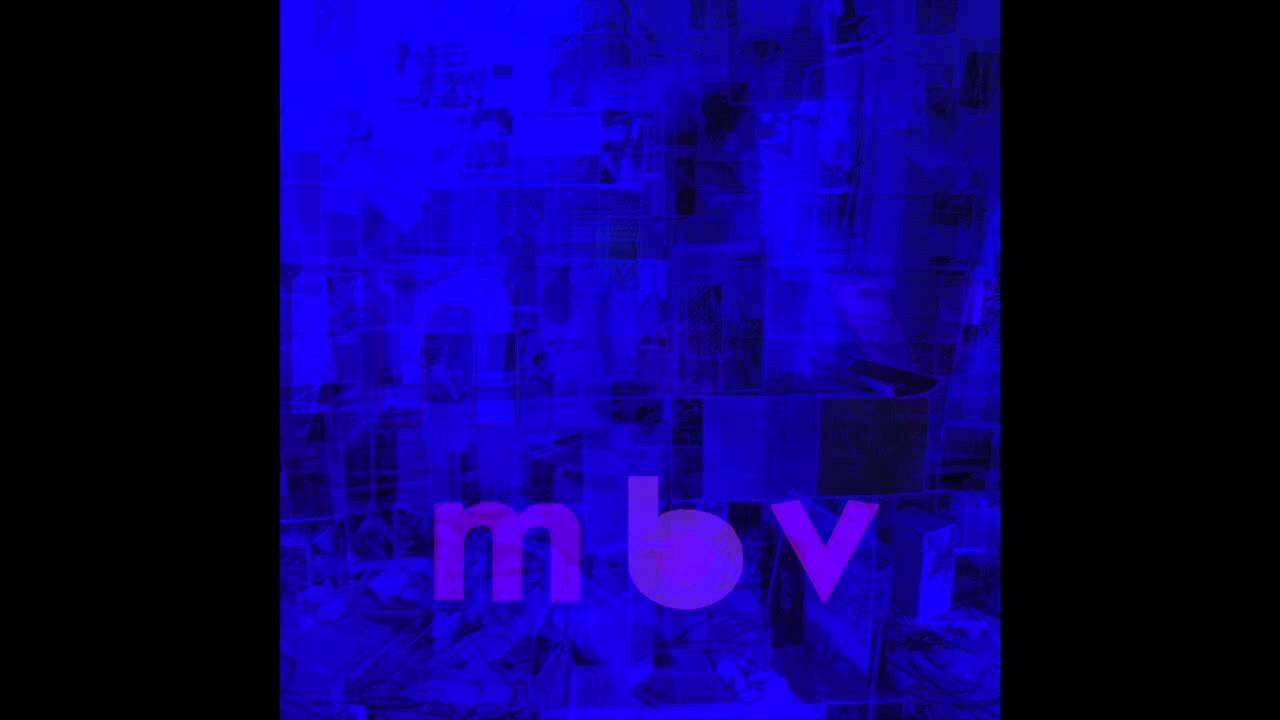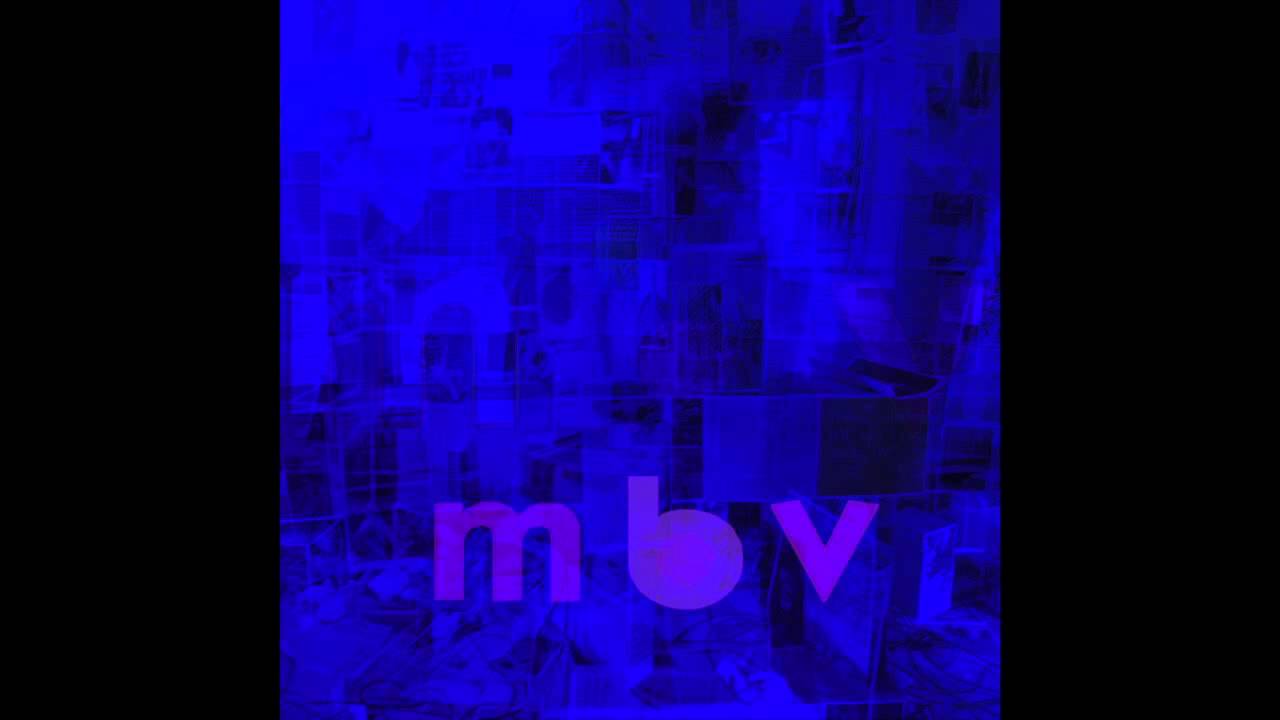When rumours surfaced in the mid-90s that My Bloody Valentine’s Kevin Shields had got heavily into drum & bass many observers were surprised. Shields may well have been one of the foremost modernisers in contemporary music but his innovations were considered to be based firmly in the trebly, guitar-ridden domain of indie rock, a world away from the revolutionary rhythmic fury of drum & bass.
Except, of course, there is an argument that My Bloody Valentine have innovated a great deal in the world of drums, rhythm and percussion over their 30-year career, but this has been overlooked in the race to acclaim their guitar progressions.
Indeed, it was arguably only with the release of mbv in 2013 that My Bloody Valentine’s rhythmic invention has come to any kind of prominence, largely thanks to one track – ‘Wonder 2’ – which clatters along at a moderate drum & bass clip (of which more later). Even so, many reviewers overlooked this innovation as they obsessed over whether mbv‘s guitar sound was a significant step on from Loveless.
Take ‘If I Am’, mbv‘s fifth track: the unusual drum rhythm that kicks off the track is laden with echo that seems to reverberate in time to the beat, creating extra percussive layers that cradle the gauzey guitars. They pull this trick again on ‘In Another Way’, giving the song’s semi-baggy beat a furiously unseated edge. It’s not that putting echo on drums is a new trick, of course, but here it’s done in a way that makes it hard to tell what’s a drum hit and what is echo, with the effect synched perfectly to the beat in a way that’s both unsettling and feverishly funky.
But it is on the album’s last two tracks that the drums really come into their own. ‘Nothing Is’ uses a short drum sample and loops it to create a breakneck beat that sits halfway between ‘The Funky Drummer’ and an advancing army. The loop shifts almost imperceptibly as it becomes increasingly freighted with volume and effects, carrying the song over its three-and-a-half minute length.
The album ends with ‘Wonder 2’, the song that brings the band’s sound closest to their interest in drum and bass all those years ago. "There’s one drum and bass song, from that era when we were doing drum and bass music, which never came out," Shields told the Quietus in May 2012, presumably in reference to ‘Wonder 2’. "We were actually inventing a new sound – and this song doesn’t really represent it, but – we were doing slowed down drum and bass music around 1993, 1994. But it just came to nothing, mainly because we didn’t know how to do it….
“We got some really good things, but the lesson we learnt was that without the element of spontaneity, without the element of chance we used to get from live playing, it doesn’t work for us. Just making music on the computer isn’t really what I’m into. But there’s one song that survived from that period, that approach. Like slowed down drum and bass. Except, um… it’s really fast."
‘Wonder 2’s rhythm track thunders away at a (slow-ish) drum & bass tempo with an ‘Amen Brother’ shuffle (Shields told journalist Simon Reynolds in 1995 that he liked the way the rhythms on drum & bass tunes “shift and inverse on themselves, the way there’ll be ten different beats at once”).
But there’s a massive difference here: whereas the individual sounds on drum & bass tracks are typically distinctive, with the listener able to make out every sampled cymbal crash and snare hit, ‘Wonder 2’s drums are as blurry and indistinct as the guitars that surround them.
A rhythm is indiscernible, but it sounds as if lost in heavy fog. As a result, it is near impossible to work out what might be drums, what is effects noise (there’s a lot of echo here too) and what is actually guitar or some other instrument. ‘Wonder 2’ uses a drum and bass rhythm, in other words, but it’s a rhythm that resonates almost without drums and the effect is remarkable.
Drums, clearly, count for a great deal with Kevin Shields and he goes to significant lengths to get them right. In a 2012 interview with Drowned In Sound, My Bloody Valentine bass player Debbie Googe revealed that the drums on mbv had been “added then taken off at least once”. “His [Shields’] brother did them at one point, then Colm (O’Ciosoig) came in and redid them,” she added.
For the band, their innovations with rhythm go right back to 1988, and ‘All I Need’ from their landmark Isn’t Anything album. The song unfurls over a muted rhythm, one that is more like a heartbeat than a regular drum track, helping to emphasise the song’s womblike qualities (a description that is both clichéd and true).
Kevin Shields told Tape Op, the music recording magazine, in 2001 that the drums for the track came from “a drum machine beat just going like a heartbeat effect” used alongside a reverse reverb programme on an Alesis Midiverb II digital effects processor. “It reverses the envelope,” Shields explained. “It creates a sort of simulated effect, you get kind of a rhythmic effect out of it if you have any transients, anything with attack, the attack comes back slightly but you wouldn’t know it from listening to the record.”
It may be easy to overlook the drums in a song that presents such a thrilling reinvention of the guitar, but picture ‘All I Need’ with a regular 4/4 indie rock beat and you’ll see how well the heartbeat rhythm works.
Equally rhythmically adventurous – albeit in a rather different way – is ‘Instrumental Number Two’ (also known as ‘Instrumental B’), one of two tracks given away on a limited 7” that came with early copies of Isn’t Anything. Shields apparently referred to it as “a real acid house track”, featuring a drum track lifted (uncredited) Public Enemy’s ‘Security Of The First World’ and has been called the band’s first experimentation with dance music. Even today, the combination of sampled beat and eerie guitars sounds like little else.
Shields told BrooklynVegan that the group were “a very big influence” on the band, explaining, of ‘Instrumental Number Two’, “it was the beginning of this Public Enemy track, ‘Security Of The First World’, which is on It Takes A Nation Of Millions…, and we made a loop out of it and put some guitar over it.” And Public Enemy weren’t the only hip hop act they were listening to. Shields told Reynolds that it was “the weird sampling in hip hop records” that inspired the band to make “eerie” guitar effects in the first place.
It is worth mentioning at this point the musical environment in which Isn’t Anything, My Bloody Valentine’s great leap forward, was recorded and released. 1988, for many people, is synonymous with acid house and innovative dance singles, such as A Guy Called Gerald’s ‘Voodoo Ray’ or Baby Ford’s ‘Oochy Coochy’, which suggested a British musical scene running wild with new technological tools. But guitar music at the time was still largely stuck in the world of live instrumentation: notable releases that year included Pixies’ Surfer Rosa, Morrissey’s Viva Hate and Sonic Youth’s Daydream Nation, all great records, but with little in the way of rhythmic innovation.
In fact, one or two important exceptions aside – Happy Mondays’ Bummed and New Order’s Technique (released in January 1989, but recorded in 1988) – the worlds of sample-based dance music and indie rock had little connection back in 1988, which makes My Bloody Valentine’s experimentation with drum machines and sampling all the more revelatory.
Two years after Isn’t Anything, the Glider EP appeared on Creation, marking another landmark for the band. The EP kicks off with ‘Soon’, a song that Brian Eno said “set a new standard for pop”, and which is driven by a purring breakbeat. This crossover between dance music drums and guitars might not have been entirely revelatory at the time – Primal Scream’s ‘Loaded’ came out two months earlier, in February 1990 – but ‘Soon’ makes the synthesis sound utterly seamless, in a way that the thousands of stuttering baggy bands would soon do their best to disprove.
A year later came Loveless, the band’s second album proper and a release that is still talked about in hushed tones some 22 years later. Among the hazy, gliding guitars was another tale of rhythmic invention: Mike McGonigal’s 33 1/3 book on Loveless explains that all but two of the tracks (‘Only Shallow’ and ‘Touched’) are made up of samples performed by regular drummer Colm Ó Cíosóig, who was suffering from physical and personal problems at the time. “[I]t’s exactly what Colm would have done, it just took longer to do,” Shields explained, rather modestly. The effect may have been indistinguishable from live recordings on most tracks – rather the point, you suspect – but it proved another example of the band’s willingness to experiment.
In the Tape Op interview, Shields explained how the drums were put together for ‘To Here Knows When’, one of Loveless‘ finest moments, combining drum machines with live tambourine. “There’s programmed drums and they’re put through this TC unit, I forget what it’s called, but it does dynamics and delay and it’s just adds this weird sort of feel to it. A live tambourine.”
The comparison with Primal Scream here is instructive. There is a great deal to connect the two bands: both were on Creation Records, both came from a background of guitar noise and both made landmark albums of the early 90s in Loveless and Screamadelica. But these two albums are typically viewed in very different ways: the latter is seen as the record that brought together rock and dance, using sampling and cut and paste techniques to re-define what rock music could be. Loveless, meanwhile, is typically seen as a “guitar album” – albeit a very innovative one.
Without wishing to denigrate Screamadelica one bit, much of the album has its roots in collaboration, kicked off by Andrew Weatherall’s remix work on rocky ballad ‘I’m Losing More Than I’ll Ever Have’, which he turned it into rave anthem ‘Loaded’. Loveless, however, was largely the work of one man, Shields, who therefore arguably managed to do more to integrate sampling into rock music than any member of Primal Scream.
This point is underlined by listening to the Andrew Weatherall remix of ‘Soon’, from the second Glider 12". In remixing the track Weatherall lifts the drums from Westbam’s ‘Alarm Clock’, a popular club track at the time, creating something that is more conventionally dance-ish than the original. His remix is not, however, a transformation of the kind that birthed ‘Loaded’. It is more of a finesse and the drums are, in fact, equally danceable and interesting on the original song.
Whether My Bloody Valentine or Primal Scream contributed more to bringing together the rhythmic revolutions of dance music and the guitar-based world of rock is not really the point. Nevertheless, examining My Bloody Valentine’s innovation with rhythm helps us to make sense of the enigma of the band and above all that of leader Kevin Shields. And this is important. Suddenly, certain things in the history of My Bloody Valentine add up: Shields’ love of drum & bass and hip hop, the Weatherall remixes, his work with Primal Scream, his re-master job on Screamadelica…
“I love when things bend out of shape,” Shields told Pitchfork this summer. “There’s a sense of freedom when you hear music like that. That’s why I love drum & bass music.” Shields is not just a guitar fanatic and innovator. He’s a musical moderniser, guitars, drums and all. And if you miss that, you only get half the story.
Correction: the Simon Reynolds interview referenced was originally cited as being published in 2008, but was actually published in 1995; the piece has since been amended




